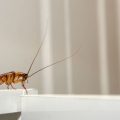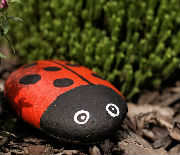
Travelling should be an exciting experience, but the last thing you want to deal with is bed bugs hitching a ride in your luggage. Bed bugs in travel bags can turn your dream holiday into a nightmare, causing stress, discomfort, and potentially spreading to your home. Fortunately, there are effective ways to prevent and get rid of bed bugs while travelling.
Here are some expert tips and travel hacks that can help you protect your luggage against bed bugs. Check out these essential tips for keeping your luggage bedbug-free while you travel.
Table of Contents
How do bed bugs travel
Bed bugs are adept travellers, primarily hitching rides on luggage, clothing, and personal belongings. They often spread through human activity, particularly in high-traffic areas such as hotels, airports, buses, and trains. Bed bugs can easily crawl into cracks and crevices in suitcases, backpacks, and other bags, making it crucial to focus on getting rid of bed bugs in luggage to prevent them from travelling unnoticed from one location to another.
They also infest places like hotel rooms, where they latch onto belongings of unsuspecting travellers, eventually making their way into homes or other accommodation. Their ability to survive for months without feeding enables them to travel long distances undetected, making them a persistent issue for travellers.
As a matter of fact, you can also take home fleas, ticks, and roaches, which are all bed bug look-alikes. But let’s stick to bed bugs for now. By following this guide, travellers can significantly reduce the risk of bed bug infestations in their homes.
Bed bugs thrive in dark, cool places where humans are present for long periods. So, a hotel room is not the only risky spot. You can also find them on an airplanes, on train seats, or even on buses and rental cars.
Essential tips for avoiding bed bugs in luggage while travelling
If you love travelling, read on to learn how to prevent bedbugs:
- Use Ziploc bags to store clothes and other items.
- For things that can’t be washed easily, like electronics or books, keep them in protective cases.
- Store used clothes in sealed bags to make them easier to wash when you get home.
How to prevent bed bugs from getting in your luggage
It’s a bed bug’s natural instinct to find a hiding spot, away from light and intruders, such as cracks and crevices. That’s why your luggage in a hotel or on a train may provide ideal conditions for these pests. Show us a happy bed bug, and we’ll show you a desperate traveller!
A thorough inspection of the hotel room
Upon arrival, thoroughly inspect your hotel room. Look around the room for live insects, blood stains, dead bugs and eggs. An infestation of bed bugs has nothing to do with sanitation or cleanliness. It’s therefore not uncommon for bed bugs to inhabit any hotel or motel – from a one-star establishment up to a five-star hotel.
During a bed bug infestation, you will smell a musty, sweet odour similar to that of soda pop. Bed bugs leave marks on sheets in a brown or red colour. Pay extra attention to the mattress, the pillow, the crevices of the bed, the wooden structure surrounding the bed, and the gaps between the wall and furniture.
Keep your luggage free from bed bugs
To prevent bed bugs from getting into your belongings, try the following:
- Elevate your luggage, as well as other personal belongings. Always inspect the luggage rack carefully for any signs of bed bugs. Keeping your suitcase off the ground and away from the bed is a great way to keep these critters out. The luggage rack can be moved away from the wall to reduce the risk of bed bugs crawling up and into your belongings, as well. Remember: bed bugs hide in soft spots, and luggage racks prevent them from climbing up the metal legs.
- Whenever you pack to check out, inspect your luggage to ensure you haven’t picked up any unwelcome guests. Don’t forget to check your bags and clothing upon returning home, as bed bugs are excellent hitchhikers. We recommend that you unpack and check your belongings in your garage or washroom.
- In most cases, bed bug eggs and nymphs are too small to spot with the naked eye. Inspect your luggage visually for small spots that look like ink in corners and along seams. If you experience bite-like reactions or dark red bloodstains on bedding, it’s best to assume that the luggage, clothing, and other belongings in your bags are infested with bed bugs and are in need of decontamination. The majority of people consider heat and cold treatments more practical than chemicals.
Learn How to Check For Bed Bugs
How to check for bed bugs in luggage
How to tell if bed bugs are in your luggage? Inspect your suitcase to detect infestation with bed bugs:
- Choose a place with a non-carpeted surface.
- Check the inner lining of your suitcase, under straps, and around zippers. Bed bugs tend to hide in places where fabric overlaps.
- Use a flashlight to look closely at the seams and folds of fabric for these tiny eggs or shed skins.
- Look for live bed bugs and signs of bed bugs: young bed bugs (size: 1/16” [1.6 mm] ), adult bed bugs (size: 1/4″ to 3/8″ long [5-9 mm] ), cast skins, faecal spots.
- Check for small, dark spots on the inside lining of your suitcase. These can often be mistaken for ink or dirt but are a strong indication of bed bug activity.
How to get rid of bed bugs in luggage
The things you’ll need are plastic liner bags, a washing machine, a vacuum cleaner and a freezer. Unconventional, huh? Here’s what to do.
- Upon returning home, wash all of your clothes and allow them to dry on high heat. Put all clothes and washable belongings into plastic bags.
- Seal and put them aside until ready to launder.
- Hot washing is recommended for all clothing (at least 60°C).
- You should also consider treating your luggage by heating (above 60°C for at least 20 seconds) or freezing (extreme cold at or below -20°C for at least two hours). Other items that travellers bring along with them should also be heated or frozen, if possible.
- After the washing and temperature treatments, vacuum-clean your belongings, including all clothes, bags and suitcases. A thorough vacuum cleaning will remove all dead or remaining bed bugs.
- Remove the vacuum bag immediately, wrap it in another plastic liner bag and dispose of it.
Can bed bugs survive in a bag?
Yes, bed bugs can survive in a bag. The small size of bed bugs and the ability to hide in cracks and crevices make them easy to infest luggage, bags, and other personal belongings.
While bed bugs typically prefer to hide in cracks and crevices in furniture or walls, they can also find a host to feed on when needed. If a bed bug is in a bag, it may emerge at night to feed on the person carrying the bag or others in close proximity. This can lead to infestations being unknowingly brought into new places like homes, hotels, or workplaces.
Bed bugs can survive without feeding for weeks or even months, depending on the environmental conditions. This means that a bag that has been exposed to bed bugs, even if it is not frequently used, may still harbor these pests for an extended period before you realize they are there.
What is the most effective bed bugs treatment?
The most effective bed bug treatment is to hire a professional bed bug pest control company. An experienced pest control technician who has handled bed bug infestations will be able to spot and eradicate these pests most quickly and efficiently.
Best ways to prevent bed bugs while traveling
Preventing bed bugs from infesting your luggage while travelling requires a combination of proactive measures, vigilant inspection, and immediate action if an infestation is discovered. By following best practices such as using protective luggage covers, packing in sealed plastic bags, and carefully inspecting both your luggage and hotel rooms, you can significantly reduce the risk of bringing these pests home. If you do find signs of bed bugs, getting rid of bed bugs in luggage as soon as possible is essential to avoid further contamination and ensure a bed bug-free return home.
Image source: kwanchai.c/shutterstock.com










Leave a Reply